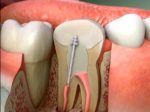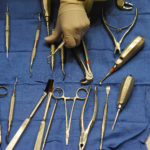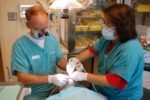Table of Contents
Tobacco Habit and Oral Health
The effects of tobacco use on people’s overall health are well-known. The active ingredient in tobacco, nicotine, is highly addictive. Smoking and chewing tobacco products are associated with incidences of cancers, emphysema, and the decreased ability to heal.
Tobacco use also affects dental hygiene and dental health. Smoking and chewing tobacco discolour teeth, cause bad breath, and contribute to dental (caries) cavities, abrasions, and erosion.
Tobacco’s addictive nature and adverse effects can be costly. There’s a necessity of educating children early about dental hygiene and oral health to avoid tobacco and such other addictions.

Tobacco Effect on Teeth
Teeth Stains – Smoking and chewing tobacco causes brown to black staining on the surface of the teeth, especially the front teeth. Stains from smoking are caused when the tar and nicotine residue left on the teeth reacts with chemicals in the tobacco smoke. Stains are the result of chemical reactions between residue left on the teeth and the air or saliva.
Dental Caries – Dental caries are more prevalent in smokers and chewers of tobacco than non-users. Smoking changes the make-up of saliva making the mouth more susceptible to caries. Chewing tobacco contributes to caries because it contains high amounts of sugar which is a source of food for the bacteria that causes caries.
Tooth Abrasions – Long-term pipe smokers suffer the most abrasions because holding the pipe in the same place each time eventually notches the teeth. Chewers suffer from micro-abrasions caused fromgritty substances present in the processed tobacco products.
Tooth Erosion – Erosion occurs when the tooth’s enamel is chemically broken down. This has been occasionally reported in smokers and chewers but isn’t common.
Oral Diseases Caused by Tobacco
Smoking and chewing tobacco causes or contributes to many oral diseases; someare described below:
Oral Cancer – Numerous studies have shown that smokers are at a much higher risk of developing malignant oral cancers than non-smokers. These cancers mostly affect middle-aged to elderly people.
Oral Precancer – Oral precancer is easy to recognise because of its thick white lesions; medical facilities refer to them as leukoplakias. Smoking-associated leukoplakias tend to be found in the base of the mouth. They generally disappear if smoking is stopped and don’t progress into malignant cancer.
Periodontal Disease – Periodontal disease is an infection of the gums and bone. Studies have shown smokers have a higher prevalence of periodontal disease than non-smokers, although they disagree about the underlying mechanism. More studies need to be performed to determine how smoking cessation affects this relationship.
Aphthous Ulcers – These are small shallow sores on the inside of the mouth. Aphthous ulcers occur less frequently in tobacco smokers than non-smokers.
How to Stop the Habit of Tobacco
It’s easy to understand it’s beneficial to stop using tobacco products. Nicotine is psychologically and physiologically addictive, making it very difficult to stop. The greatest chance for success comes from using a multifaceted approach.
Support groups and classes are inexpensive and easily available.
Medications such as nicotine gums and patches can be used to wean people off nicotine. Additionally, doctors can prescribe medications such as Zyban to help curb cravings.
Oral Treatments for Tobacco Addicted People
Treatment for Teeth Stains– Stains can be removed professionally via deep cleaning, bleaching, or with veneers. Some stains can be removed at home using dentist recommend tray- and strip-based bleaching kits or special toothpastes.
Treatment for Dental Caries – Treatment for dental caries depends on the severity of the decay but will always require a trip to the dentist. Dentists will prescribe an assortment of fluoride treatments or fillings.
Treatment for Tooth Abrasions – Brushing correctly and using a good fluoride toothpaste will help strengthen your teeth and prevent sensitivity. Use a soft toothbrush and small circular motion for best results.
Treatment for Tooth Erosion – Dentists offer several treatment options for tooth erosion that depend on the location and severity of the disorder. They may employ fillings, crowns, bonding, or veneers.
Treatment for Oral Cancer – Cancer treatments involve radiotherapy, chemotherapy, and/or surgery. You and your doctor will discuss the risks and benefits associated with each course of therapy.
Treatment for Oral Precancer – Recent animal models have found that boron neutron capture therapy (BNCT) can inhibit tumour growth. Specifically it’s being researched to treat potentially malignant cells that aren’t yet detectable under the microscope.
Treatment for Periodontal Disease – Good oral hygiene such as adequate brushing and flossing are hallmarks of treating gum disease. Professional dental procedures include deep cleaning, root planning, and sometimes antibiotics.
Treatment for Aphthous Ulcers – The first line of defence against aphthous ulcers is the topical application of corticosteroids in conjunction with anaesthetics. Severe cases may require systemic corticosteroids.
Author Bio:
Susan works at Oxford House Dental Practice, a pioneer in quality dentistry since its establishment in 1954. With its large, private car park, familiar exterior, friendly attitude of surgeons and the full range of dental treatments, it is a well-known dentist in Milton Keynes.




